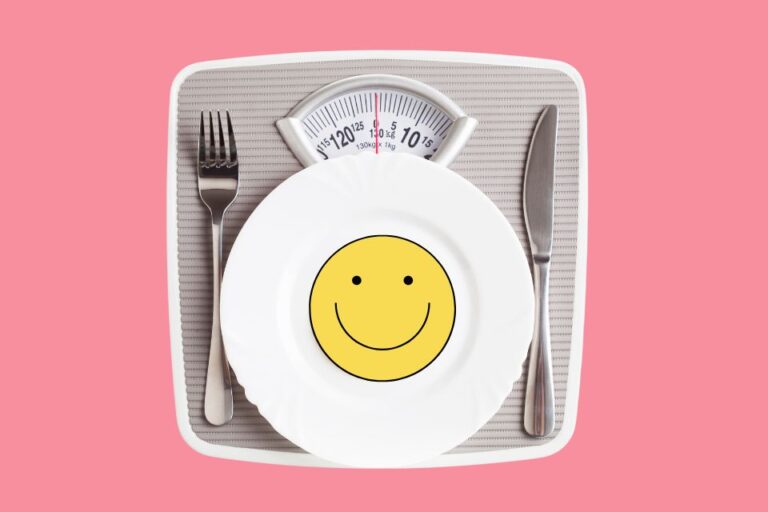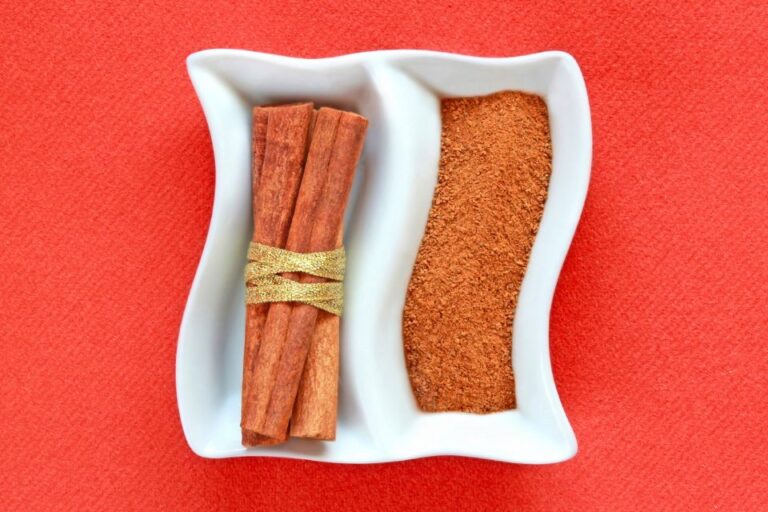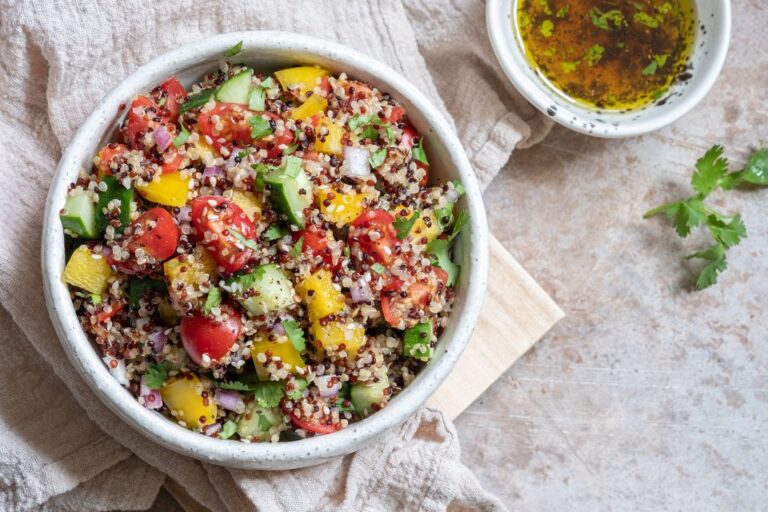Which Milk Is Best For Weight Loss?
Up until the last few decades, there was one type of milk: dairy milk. You could find different levels of fat, but milk came from a cow unless you made a special effort to find soy milk at a health food store.
In the last few years, however, milk offerings have expanded dramatically. Now, there’s lactose-free milk, soy milk, rice milk, almond milk, coconut milk, oat milk, and more. Each type of milk has its advantages and disadvantages, and which one you should choose depends on your diet, health requirements, and taste preferences.
Is Milk Good for Weight Loss?
Yes! Research shows that consuming at least 3 servings per day of dairy can significantly increase fat loss [1]. Moreover, people who eat yogurt daily lose more weight than people who don’t [2].
At just 90 calories per 8oz glass, skim milk is a great source of nutritious, lean protein.
Despite common rumors, milk does NOT cause weight gain, especially if you choose low-fat (1%) or nonfat (skim) varieties. Fortified plant milk can also be part of a healthy diet for weight loss.
Dairy Milk
Dairy milk includes all the milk options that come from a cow.
Most supermarkets carry milk with different fat content, including whole milk, 2% milk, 1% milk, and nonfat/skim milk.
Whole milk is cow’s milk with none of the fat removed. It contains 8 grams of fat per cup, and since it still has all of the milk’s natural components, whole milk is high in protein, saturated fat, and calcium.
Other varieties of dairy milk have some or all of the fat removed, which reduces their calorific value. Whole milk has 150 calories per cup, while 1% has 110 calories per cup, and skim milk has 90 calories per serving.
Many doctors and dietitians recommend skim milk because it‘s nearly fat-free, lower in calories, and still offers all of the nutritional benefits of whole milk, including bone-strengthening calcium, vegetarian protein, vitamins A & D, and more.
For people with lactose intolerance, dairy milk is also available in lactose-free varieties. An estimated 30-50 million Americans are unable to digest lactose, so lactose-free dairy products are becoming increasingly common in supermarkets [3].
As with other dairy milk, lactose-free milk is an excellent source of calcium and protein, as well as other vitamins and minerals, and is available in 2%, 1%, and fat-free varieties.
Pros & Cons of Dairy Milk
+ Less processed than other types of milk
+ Naturally high in protein, calcium, and other nutrients
+ Many different varieties, including fat-free and lactose-free
– Higher in calories than some plant-based milks
– Whole and 2% contain high levels of saturated fat and cholesterol
Almond Milk
Almond milk is made from ground almonds and water. This plant milk has exploded in popularity, but is almond milk good for weight loss?
It’s not a simple yes or no answer. Unsweetened almond milk is lower in calories than other milk, and it’s also vegan and free of cholesterol, saturated fat, and lactose. As a result, it’s an increasingly popular choice for those trying to lose weight or with dietary specifications.
However, it’s far from perfect. Even though almonds are high in protein, almond milk is not a good source of protein with just one gram of protein per serving. It is also low in calcium, but many brands are now fortified with calcium and vitamin D.
Many brands of almond milk are also highly processed and contain multiple artificial additives. Some products also contain carrageenan, which is a potentially harmful emulsifier that causes digestive issues in some people [4].
Pros & Cons of Almond Milk
+ One of the lowest-calorie milk options
+ No saturated fat, cholesterol, or lactose (and vegan)
– Not a good source of protein
– Often highly processed and only sometimes fortified
Soy Milk
Soy milk is made from soybeans and water.
Since they come from plants, unsweetened versions are naturally low in calories, cholesterol, saturated fat, and lactose. Soy milk and soybeans are good sources of protein and potassium, and fortified versions also contain calcium.
However, soy is also a natural phytoestrogen, which means that it can mimic the effects of estrogen in the body [5]. For this reason, soy products may not be the best choice for people suffering from hormone-related conditions such as thyroid disease or polycystic ovary syndrome.
The consumption of excess soy products has also been linked to lower sperm counts in reproductive-aged men [6]. Like almond milk, soy milk is very processed, and also contains the questionable ingredient carrageenan.
Lastly, while you may be choosing soy milk to avoid the digestive issues you blamed on dairy, soy can actually cause similar symptoms in many people, such as bloating, water retention, and abdominal discomfort.
Pros & Cons of Soy Milk
+ Unsweetened plain soy milk is vegan and relatively low in calories & saturated fat
+ Good source of protein (more than almond milk, less than dairy milk)
– May affect hormone levels if consumed in excess
– Can cause digestive problems similar to those associated with dairy milk
Rice Milk
Rice milk is made from milled rice and water. It is the least allergenic of these four milk options, so it is a popular choice for those with multiple allergies.
Although it is not a natural source of calcium or vitamins, rice milk – like soy milk and almond milk – can be fortified to provide these nutrients. It has a slightly sweet flavor and is naturally low in fat, but this milk is also very high in carbohydrates (22g per glass) and higher in calories compared to other options.
Rice milk is also a poor source of protein, with less than one gram per serving. This nutritional profile makes it less than ideal for people with diabetes or those following a low-carb diet like keto.
Another concern with rice milk is its inorganic arsenic content. Arsenic is a toxic compound that occurs naturally in both organic and non-organic matter, and the latter can seep into rice.
While the average levels are low enough that this staple grain is widely considered safe for human consumption, experts do not recommend that infants, children, or pregnant women rely solely on rice products (rice milk, rice cereal, etc.) for nutrition [7,8].
Pros & Cons of Rice Milk
+ Least allergenic milk option (no milk, nuts or soy)
+ Naturally low in cholesterol and lactose-free
– Not a good source of protein and high in carbohydrates
– Not recommended as a primary milk for infants, children, and pregnant women due to elevated arsenic content
Best Milk to Drink for Weight Loss
When you’re trying to lose weight, small daily changes like switching your milk can really help.
All varieties of milk have advantages and disadvantages, but it’s important to remember that losing weight isn’t just about consuming fewer calories—it’s also about overall health. For example, dairy milk is slightly higher in calories, but it also contains more protein and calcium than other types of milk, which have both been shown to help with weight loss and fat burn.
Barring an allergy to milk, we recommend fat-free dairy milk to optimize your health and weight loss. If you are lactose intolerant, opt for lactose-free dairy milk instead of popular (and often more expensive!) plant-based milk.
If you are vegan or have another reason to avoid dairy milk entirely, the best milk alternative for weight loss depends heavily on your individual health and nutrition needs. Soy milk has more protein, while almond milk has fewer calories.
REFERENCES
1. Zemel, M. B. (2005). The Role of Dairy Foods in Weight Management. Journal of the American College of Nutrition, 24(sup6). doi: 10.1080/07315724.2005.10719502
2. Zemel, M. B., Richards, J., Mathis, S., Milstead, A., Gebhardt, L., & Silva, E. (2005). Dairy augmentation of total and central fat loss in obese subjects. International Journal of Obesity, 29(4), 391–397. doi: 10.1038/sj.ijo.0802880
3. Milk Matters. Lactose Intolerance: Information for Health Care Providers, Lactose Intolerance: Information for Health Care Providers (2006).
4. Pointer, K. (2017, March 20). Should You Remove Carrageenan from Your Diet?
5. The Nutrition Source. (2019, October 28). Straight Talk About Soy.
6. Chavarro, J. E., Toth, T. L., Sadio, S. M., & Hauser, R. (2008). Soy food and isoflavone intake in relation to semen quality parameters among men from an infertility clinic. Human Reproduction, 23(11), 2584–2590. doi: 10.1093/humrep/den243
7. Krans, B. (2019, May 29). Comparing Milks: Almond, Dairy, Soy, Rice, and Coconut.
8. FDA concludes study of arsenic in rice products; no dietary changes recommended (2013, September).







